It's all about the classical music composers and their works from the last 400 years and much more about music. Hier erfahren Sie alles über die klassischen Komponisten und ihre Meisterwerke der letzten vierhundert Jahre und vieles mehr über Klassische Musik.
Thursday, October 27, 2022
Beethoven: Piano Concerto No. 5 "Emperor" Op. 73 - Daniele & Maurizio Po...
‘They would put white musicians on the cover’ – author spotlights music history’s trailblazing Black women
By Sophia Alexandra Hall, ClassicFM
@sophiassocialsWe speak to first-time author, harpsichordist Leslie Kwan, for Black History Month to learn more about some of history’s trailblazing Black women musicians – all featured in her new children’s book, ‘A is for Aretha’.
“I wanted to create a primer for teaching children about the Black women that created and shaped various genres of music,” author and harpsichordist Leslie Kwan tells Classic FM about her upcoming children’s book A is for Aretha, which spotlights 26 trailblazing Black women throughout the history of modern music – from Aretha Franklin and Lizzo, to classically trained musicians who faced barriers when entering the industry.
So many of these women, Kwan adds, were also “part and parcel to the shaping of civil rights, which was often commemorated in their songs”.
One of the musicians featured in her book is Odetta Holmes – known as Odetta. Now remembered as an American folk singer who played the guitar, growing up, Odetta and her peers believed she was destined for the stage of New York’s esteemed Metropolitan Opera.
In an interview with The New York Times during her lifetime, Odetta revealed that as a child, “a teacher told my mother that I had a voice, that maybe I should study, but I myself didn’t have anything to measure it by.”
Her mother reportedly wanted Odetta to be the next Marian Anderson, a Black contralto who would become the first African American singer to perform at the Metropolitan Opera in 1955. Odetta had a remarkably impressive vocal range, extending from a baritone to a soprano’s (G2 - B5).
Read more: 11 Black opera singers you should know about
Odetta began operatic training at the age of 13, however admitted later in life that she was always pessimistic about her chances of making it in the world of classical music.
The folk musician told the Albany Union Times towards the end of her life that, “I was a smart kid and I knew that a black girl who was big like I was was never going to be in the Metropolitan Opera.
“Look at Marian Anderson, my hero. It wasn’t until she was almost retired before they invited her to sing at the Met. I had taken the clues.”
Feeling shunned by the world of classical music, Odetta would go on to find her voice in folk music, and became an integral figure in the American folk music revival of the 1950s and 1960s.
She was often referred to as ‘The Voice of the Civil Rights Movement’, for her music which expressed the experiences of racism and injustice faced by Black people. Rosa Parks was reportedly ‘her No. 1 fan’, and in 1961, Martin Luther King Jr. dubbed her the ‘Queen of American folk music’.
Then, there was Nina Simone. Simone, who at the time still went by her birth name Eunice Waymon, enrolled in New York’s Juilliard School during the summer of 1950, and later applied for a scholarship to study at Philadelphia’s Curtis Institute.
She was denied admission despite a great audition, and throughout her life, Simone recounted that this rejection had been due to her being profiled because of her race.
Simone’s family had moved to Philadelphia due to their expectation that the young pianist would be accepted, which made the rejection extra painful for the aspiring classical musician.
In the documentary What happened, Miss Simone?, the world-renowned singer and pianist recalls of her audition, “I knew I was good enough, but they turned me down. And it took me about six months to realise it was because I was Black. I never really got over that jolt of racism at the time.”
Discouraged by the failed audition, Simone began taking private lessons with Curtis Institute piano professor, Vladimir Sokoloff. To fund her lessons, she began performing at New Jersey’s Midtown Bar & Grill, where she would play piano and sing under the stage name, Nina Simone.
This career move would change the direction of her life forever, and the events that followed this posting led to her becoming the legendary American singer, songwriter, pianist, and civil rights activist she is remembered for being today.
Read more: 19 black musicians who have shaped the classical music world
‘They would put white musicians on the cover of Black musicians’ recordings’
As a pianist by training, Kwan was particularly excited to feature Simone in her upcoming book.
“Nina Simone, she spent time in Paris like me, so I felt like I had a particular connection to her. We had similar experiences, especially as pianists, and I understood the story of her conservatoire experience.”
Kwan, who is first generation Guyanese-American, raised in Long Island, cites American actress Viola Davis, who recently spoke out about the difficulties getting her new film Woman King made.
“Davis had to fight to get the Woman King made, because the bottom line in Hollywood is money. Because films with a predominately Black female cast haven’t led the global box office, there’s no precedent that it will work.”

“It was the same in the music industry, particularly during the 20th century. Thinking about popular music in the 20th century, labels would hire Black musicians to sing and do recordings, but then would not put those musician’s faces on the recordings.
“Instead they would put white musicians on the cover, as recordings with Black musicians on the cover ‘wouldn’t sell as well’.”
Similarly, history reveals a multitude of examples of white musicians being asked to cover songs that were intended for and originally recorded by Black musicians. ‘Hound Dog’ was a song made famous in mainstream music by Elvis Presley, but it was originally recorded by Big Mama Thornton. Thornton’s original track sold almost two million copies in 1953, from which she earned a total of just $500.
Kwan is passionate about platforming these Black women musicians – showcasing who they were, what they did, and why it’s important to know about them.
Through her children’s book, she hopes the musicians featured won’t remain the ‘Hidden Figures’ she worries they have in some instances become. It was an interaction with her niece that ultimately inspired the title.
After singing Franklin’s 1967 hit, ‘Respect’ in front of her young relative, Kwan pondered why there weren’t “any books talking about Black women musicians” specifically aimed at children. This led to her writing A is for Aretha shortly after.
“Black women in music have been reduced to Hidden Figures – and I don’t want that,” she says.
A talented musician, Kwan began her piano studies at age 4 and made her debut at Carnegie Recital Hall at age 10. Kwan went on to receive a BA in harpsichord performance from Hofstra University in Hempstead, NY, and a Master of Music from the Mannes College of Music, New York City where she was a Helena Rubenstein scholar.
Subsequently, the Harpsichordist understandably defines herself as a ‘musician’ above all else. On why she therefore decided to turn her most recent career venture to writing, Kwan quotes American novelist Toni Morrison.
“If there’s a book that you want to read, but it hasn’t been written yet, then you must write it.”
‘A is for Aretha’ has received a #1 New Release Banner on the Amazon US store for its popularity in pre-orders. It will be available in bookstores from January 2023.
New report warns of ‘talent exodus’ in classical music, as parents and carers struggle
By Kyle Macdonald, ClassicFM London
Inflexibility, gendered work structures, and pay penalties are all named as things with the potential to push parents and carers out of the classical music industry.
4 out of 10 parents and carers are thinking of leaving their careers in classical music due to challenging working practices, according to a new study by Parents and Carers in Performing Arts (PiPA) and Birkbeck, University of London.
The new report, titled A Bittersweet Symphony, surveyed 410 participants from the music industry and conducted focus groups and in-depth interviews.
Its findings highlight the struggle that those in the classical music sector face when having to balance work and supporting children, elderly or sick family members.
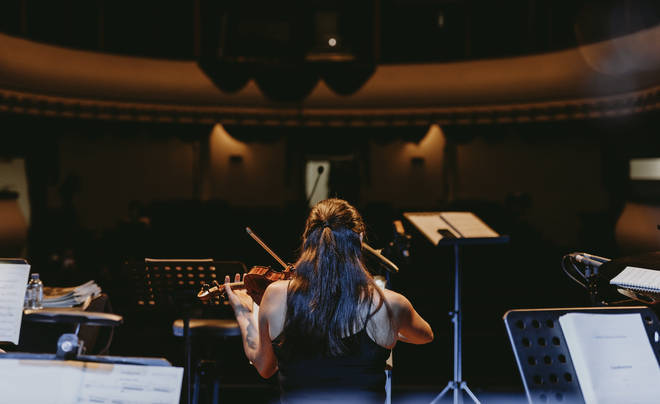
The study said that self-employed women – over 85% of whom have parenting and caring responsibilities – reported a pay penalty of £8,000.
Women with caring responsibilities were also found to be twice as likely to turn down work due to highly gendered work and caregiving structures in classical music
“There is greater impact on women, who are likely to work and earn less, and those without social capital,” the report says.
Also highlighted, are the logistics and financial demands arising from touring and working away from home, the lack of affordable, flexible, ad-hoc childcare for working musicians, and the lack of support mechanisms within the classical industry.
The report calls on industry leaders to create a classical music sector that works for everyone. It highlights flexible working, more advanced scheduling, and sharing best-practice within the industry as key next steps.
PiPA will be bringing together a working group comprising of Black Lives in Music, Help Musicians, Independent Society of Musicians, Liverpool Philharmonic, Musicians’ Union, Phonographic Performance Limited, Royal Opera House, Scottish Opera and SWAP’ra to develop a best practice charter to address the challenges raised by ‘Bittersweet Symphony’.
“Only by re-evaluating established working practices, can we begin to tackle wellbeing impacts, inclusion and diversity, and potential loss of talent,” the report says.
“We need to jointly craft sustainable, considered and flexible practices, HR policies and processes, to address the talent haemorrhage.”
Tuesday, October 25, 2022
Jonas Kaufmann ⭐ ♫ Dein ist mein ganzes Herz/von Franz Lehár
Monday, October 24, 2022
Why Is This Music So Memorable? How to Train Your Dragon
Friday, October 21, 2022
‘Classical Music – Saviour of the Burnt Out?’
By Chris Lloyd, Interlude
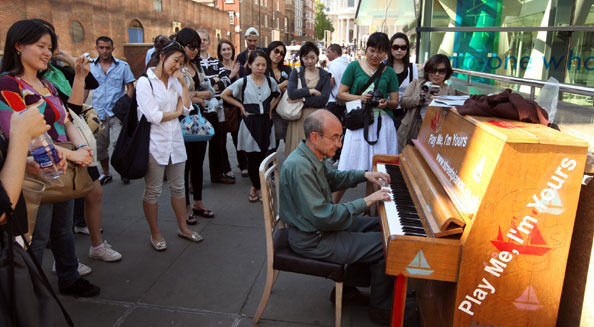
© streetpianos.com
The previous article (Einaudi: The Saviour of Classical Music) was a provocation designed to explore the relationship of a new generation of people to a flourishing genre of music based around relaxing solo piano. Because of the requirements of word scarcity in opinion pieces, I made a quick argument that aside from urging the reader to rethink their public posturing on music they don’t like, suggested that a renaissance is occurring in piano playing, with a large upswell of interest from adults showing an interest in learning the instrument.
I briefly mused on why this could be the case: is it because everyone got that bored of Netflix during global pandemic lockdowns that they looked for other forms of entertainment, and all the local knitting classes were full? Perhaps. But I believe the cause goes deeper, and includes the desire of people to engage with tactile activities (such as knitting, or pottery, or drawing classes) to counter their ever-increasingly digitally-dominated lives; as well as the relaxing and meditative nature of many popular contemporary piano artists. There is a beauty we can all relate to in the act of learning, making, and doing; the feeling of achievement when learning something difficult and complex; or the art of creating something without the pressure of being fantastic at it (i.e. an activity that is counter to their professions); an emotional outlet that one can turn to, to let go/fade out/lose oneself – and probably several more, personally specific reasons. As it turns out, playing piano is a brilliant way to achieve all of these goals.
In a conversation with conductor and academic Leon Botstein, I asked what his prognosis was for classical music makers in a western society who has seen a rapid evolution of entertainment consumption behaviours: e.g. from serialised television, to Netflix binge-watching, to TikTok microprogramming, all in a few short years. Where does this leave us in classical music – an art form that requires focused attention over long periods of time to engage with? Surely we risk becoming even more niche if our art form was completely contrary to audience preferences?
Botstein’s answer was shockingly optimistic: in his view, the vast majority of people are continuously looking for ways to better their experience on earth. These are the people who wake up and decide to train for a marathon, or sign up for yoga and Pilates classes, or learn about meditation or mindfulness, or turn to a vegan diet and eschew single-use plastics. They are looking for something that allows them to engage with themselves and others in a deep way, looking for community, looking for self-betterment. And, as Botstein so joyfully put it – this is exactly what classical music offers people.
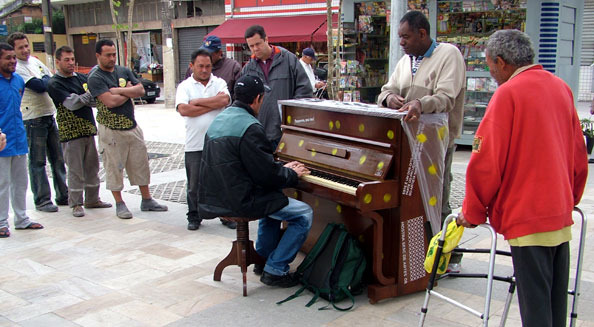
© streetpianos.com
We are standing on a goldmine, a product that time has proven undeniably fantastic; a product that is completely free-to-use (that is, anything outside of copyrighted material); and one that has the potential to add value to a huge amount of people that haven’t come across it yet! If this isn’t a cause for optimism, then I don’t know what is.
The question then becomes simple: what is the method of attracting all of these potential music-engagers and showing them how valuable it can be for their existence? Well firstly, we need to rebrand a bit. The perception of our industry from the outside sucks, period. If you agree that our product is good, then you have to agree that our packaging of it is rubbish by virtue of the fact that most people don’t want to come along to see it. Even the most delicious cake would go stale in a grey sack with a picture of a judgemental grandmother on the front of it.
Then, we need to think of ways to deliver this music that is easier to access on a basic level. We need to make it accessible and relevant to people, where they feel like they want to engage with it because it offers them immediate satisfaction and value. Oh, thanks very much Einaudi and co for creating an audience of people already engaging with the material, and sorry we’ve been such twats these past few years.
There are countless different ways this is being done and thought about: Lie Down and Listen is a London based project by concert pianist Christina McMaster as one of many examples. In my own work with the 1781 Collective I’ve explored the utility of ritual and narrative to design concert programmes that take people on a journey; a recent experience had me in front of roughly one thousand people at the closing set of a large techno festival in Germany – all of whom were on some form of stimulative substance – and my job was to take them down calmly after five days of non-stop raving to a relaxed state where they could begin to accept the reality that the Festival was finishing and they’d have to go to work the next day. A discussion with a colleague last week resulted in a plan for an meditation app which would be ‘Like Headspace, but with Classical Music.’

© meditatia.com
If you think that this can’t be done, just think about the yoga industry. What was ostensibly an extremely esoteric, complex spiritual practice, with thousands of years of complex training required to achieve enlightenment, has now been reinvented as an activity that countless millions of people around the globe engage with daily; from the most basic points of entry (such as Yoga with Adriene which couldn’t be further from what a 19th century Yogi would have imagined of their work); to people travelling around the world for Yoga retreats; becoming Yoga instructors; etc. Our equivalent might be in the person who listens to classical music for relaxing only, to taking piano lessons and going to concerts, to attending piano retreats, etc.
We’ve all bemoaned the albums and playlists of ‘Classical Music for Relaxing’ as a direct predecessor to the notion that ‘classical music is boring’, because as we all know, classical music routinely expresses the entire range of human emotion on a frequent basis, with relaxation only one tiny component of this. I’m not advocating for a use of music purely to help stressed people relax, but instead to use this existing perception to open a channel towards the full potential of music; whilst simultaneously helping guide listeners and enthusiasts to the different levels of engagement they can choose.
We cannot continue to demand that audiences listen to music in only one way – and an outdated, stuffy, and pretentious way at that. Instead, we need to start thinking about how we can take our product and passion to bring it to as many people as possible, and stop judging those who do things differently from us. What if we promoted our art form as a journey with an endless level of depth that one can choose to dive into, and one that can be satisfying at whatever level you choose to engage with? From Ludovico to Ligeti, there’s something for everyone, and everyone is welcome.
John Eliot Gardiner - his music and his life
John Eliot Gardiner stands as an international leader in today’s musical life, respected as one of the world’s most innovative and dynamic musicians, constantly at the forefront of enlightened interpretation.
Sir John Eliot Gardiner is revered as one of the world’s most innovative and dynamic musicians, constantly in the vanguard of enlightened interpretation and standing as a leader in contemporary musical life. His work, as founder and artistic director of the Monteverdi Choir (MC), English Baroque Soloists (EBS) and Orchestre Révolutionnaire et Romantique (ORR), has marked him out as a key figure both in the early music revival and as a pioneer of historically informed performances.
As a regular guest of the world’s leading symphony orchestras, such as the London Symphony Orchestra, Symphonieorchester des Bayerischen Rundfunks, Royal Concertgebouw Orchestra and Gewandhausorchester Leipzig, Gardiner conducts repertoire from the 17th to the 20th centuries. He was awarded the Concertgebouw Prize in January 2016.
The extent of Gardiner’s repertoire is illustrated in the extensive catalogue of award-winning recordings with his own ensembles and leading orchestras including the Vienna Philharmonic on major labels (including Decca, Philips, Erato and 30 recordings for Deutsche Grammophon), as wide-ranging as Mozart, Schumann, Berlioz, Elgar and Kurt Weill, in addition to works by Renaissance and Baroque composers. His many recording accolades include two GRAMMY awards and he has received more Gramophone Awards than any other living artist.
Gardiner has also conducted opera productions; at the Royal Opera House, Covent Garden, at the Vienna State Opera and at Teatro alla Scala, Milan. From 1983 to 1988 he was artistic director of Opéra de Lyon, where he founded its new orchestra.
Recent achievements with the Monteverdi ensembles include the RPS award winning Monteverdi 450 project in 2017, a reprise of the 2000’s famous Bach Cantata Pilgrimage, which toured to some of Europe’s most famous concert halls and churches in 2018, a five-year exploration of Berlioz’s major works to mark the 150th anniversary of the composer’s death, and a landmark performance of Verdi’s Requiem at London’s Westminster Cathedral in aid of Cancer Research UK. In 2019 Gardiner conducted new productions of Handel’s Semele and Berlioz’s Benvenuto Cellini, and gave his debut performances in Colombia, Russia, Brazil, Uruguay, Argentina and Chile. The beginning of 2020 saw Gardiner conduct the ORR in three Beethoven symphony cycles as part of the Beethoven 250 anniversary celebrations, with concerts at Barcelona’s Palau de la Música, New York’s Carnegie Hall, and the Harris Theatre in Chicago. In 2021 he conducted a live streamed performance of Bach’s St John Passion from Oxford’s Sheldonian Theatre, appeared at several of Europe’s most prestigious music festivals, including his 60th concert at the BBC Proms, and performed Berlioz’s sacred oratorio L’enfance du Christ at the Monteverdi Choir & Orchestras new London home, St Martin-in-the-Fields.
An authority on the music of J. S. Bach, Gardiner’s book, Music in the Castle of Heaven: A Portrait of Johann Sebastian Bach, was published in October 2013 by Allen Lane, leading to the Prix des Muses award (Singer-Polignac). Among numerous awards in recognition of his work, Sir John Eliot Gardiner holds several honorary doctorates. He was awarded a knighthood for his services to music in the 1998 Queen’s Birthday Honours List.
Classical pianist gives curious toddler an impromptu piano lesson on train station concourse

By Sophia Alexandra Hall, ClassicFM
@sophiassocialsThis very cute duet has gone viral on TikTok, drawing in new fans for both the street pianist and his young protégé...
Music has the power to surprise you – you never know where that next duet or inspiring collaboration could come from.
Karim Kamar is a contemporary classical pianist & composer from London. He’s performed at some of the country’s most iconic venues, from Ronnie Scotts to the Royal Albert Hall, but his latest viral moment took place on a rather more unusual stage.
Kamar has racked up millions of views across platforms such as YouTube, Instagram Reels, and TikTok for his #StreetPiano performances – where the musician films himself playing impromptu concerts on public pianos.
Pianos in train stations have become surprisingly commonplace across the UK and other countries, as a joyful way for travellers to bring music to each other at the start, middle, or end of their journeys.
In his latest video, Kamar is filmed being adorably ambushed on a piano in London’s St Pancras International train station by a musically curious toddler. What followed was an unexpected duet between the two musicians. Kamar helps the young child up onto the piano stool, lifting them up (both literally and figuratively) so their small hands can reach the massive keyboard.
The classical pianist then takes the toddler’s right-hand, and helps them to start playing the familiar tune of Twinkle Twinkle Little Star. Kamar accompanies them both with chords in his left-hand.
The young (and perhaps first-time) pianist’s joy is evident from the toddler’s expression, and the wonderful duet has left TikTok fans in a similarly giddy-state.
One TikTok viewer commented, “You just created a core memory & maybe inspired the little fellow!!”, while another added “This [interaction has] probably sparked a lifelong love of piano in this little one ❤️”.
And it’s not just children who are entranced by Kamar’s performances. Adults are equally impressed by the musician’s prowess. In the above video, Kamar has passersby bringing their daily commute to a standstill just to listen in.
But, if you don’t happen upon Kamar during your next train station journey, you can always follow him on Youtube or his other social media platforms for more of his musical adventures.
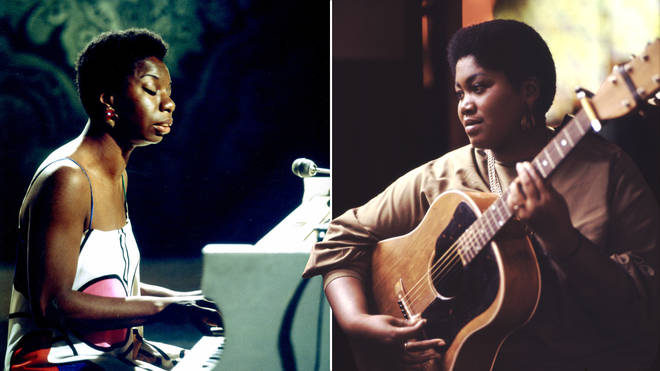


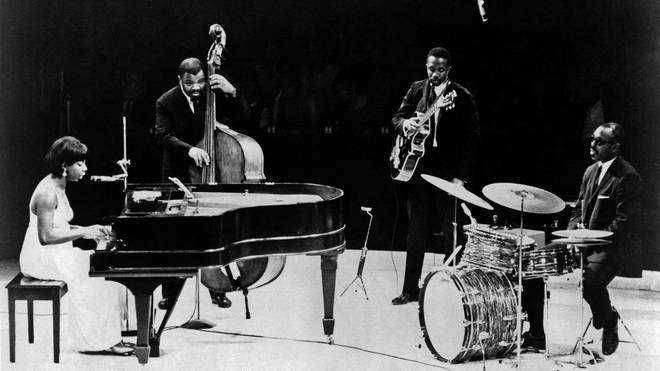
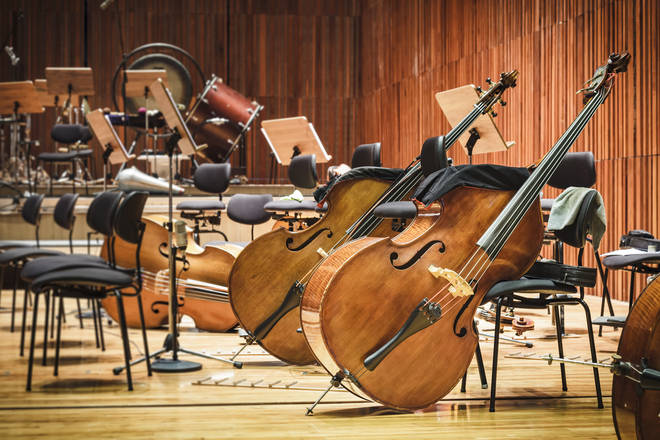
.jpg)